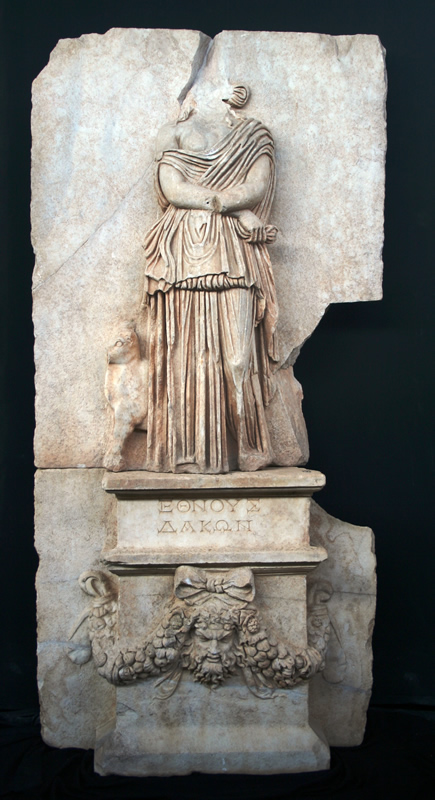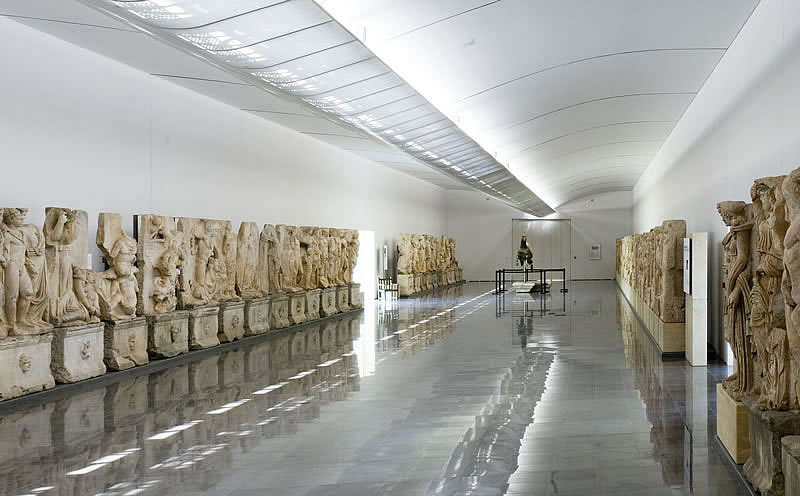History
Early Imperial period: first century AD
The city enjoyed privileged relations with the Julio-Claudian family and pursued a massive programme of urban building on the Hellenistic city plan. After the period of Zoilos, epigraphy records the prominence and activity of aristocratic local families, some with the Roman citizenship and names, such as Tiberius Claudius Diogenes. Under the emperor Tiberius, in AD 22, representatives of the city participated in the great review of temple asylum rights in Asia before the senate in Rome (Tacitus, Annals 3.62). They successfully defended their city’s privilege.
During the first century AD, the buildings begun by Zoilos were completed and expanded, and a number of new projects were inaugurated. For the assembly and festivals, the Theatre auditorium was rebuilt in marble, and the vast Stadium was constructed on the northern edge of town. The area between the Agora and the Theatre was developed as a secondary public square, the Urban Park. The city goddess also received a new Roman-style Corinthian temple, the Sebasteion, for the combined worship of Aphrodite and the Roman emperors. The Sebasteion, built c. AD 20-60, is a defining monument of the period. Its reliefs feature successive emperors over two generations — Augustus, Tiberius, Claudius, Nero — and was a concrete representation of the city’s special relationship with the ruling Julio-Claudian family.
Work soon began on another huge monumental building, the Civil Basilica, which opens off the Urban Park at its south-west corner. It is clear from technical features and details of architectural design that the building crews of the Sebasteion were re-formed for, or simply moved to, the Basilica project. When completed in the later first century AD, it was dedicated to the Flavian emperor(s), the new imperial dynasty at Rome.
Not all cities had such buildings and few had them built of marble and with such obvious architectural ‘design’ and scale. The Stadium, for example, accommodated 30,000 spectators to watch athletic contests associated with major religious festivals, far more than the population of Aphrodisias. It was a bold speculative investment, designed to enhance the prestige of the city and to attract visitors who would spend money during the festivals.





